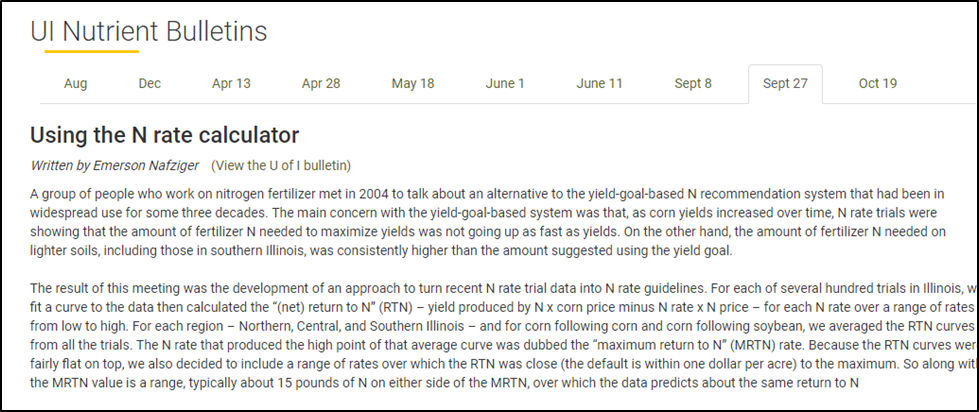The basis for nitrogen rate recommendations in Illinois is the MRTN. Years ago, the system was more of a slogan and it went like this: “1.2 is the Most You Should Do.” This meant take an average of the last five years of corn yield (bushel/acre) on a field, add 5 percent and then multiply that number by 1.2 (the estimated pounds of N per acre it took to produce a bushel of corn) to come up with the recommended nitrogen rate.
Sounds simple, but today if you follow that old guideline you would be putting on nearly 50 percent more nitrogen than needed, according to today’s NREC funded research that measures corn yield response to nitrogen year after year and feeds the Illinois MRTN system to ensure it is current and reflective of nitrogen use on all Illinois soils.
In 2005, the land grant universities re-evaluated the nitrogen rate recommendation system, and now it takes many factors into consideration: soil type, yield and economics. Thanks in large part to improved corn hybrids, nitrogen utilization has improved tremendously since the days of “1.2.” Today, on productive soils, the pounds of N it takes to produce an economically optimum yield return is between 0.7 and 0.8 pounds of nitrogen per bushel or corn—nearly half the amount of N the old “1.2” recommendation called for. Think how much nitrogen we would be wasting if we weren’t investing in nutrient research and seed technology!
But the problem with a catchy slogan is people can’t forget it. It is truly time to erase the 1.2 from our minds. To explain how today’s MRTN works, including the yield component, Dr. Nafziger at UI published a “how to” of the MRTN and it is worthwhile reading for every corn farmer. Go to https://ifca.com/4R/Updates to see the full explanation of the MRTN; CBMP recommends following the MRTN because it ensures efficient, economical and environmentally responsible use of nitrogen and demonstrates our industry’s commitment to the “Right Rate.” IFCA posts all the UI nutrient bulletins under the “Keep it 4R Crop” menu at www.ifca.com.
